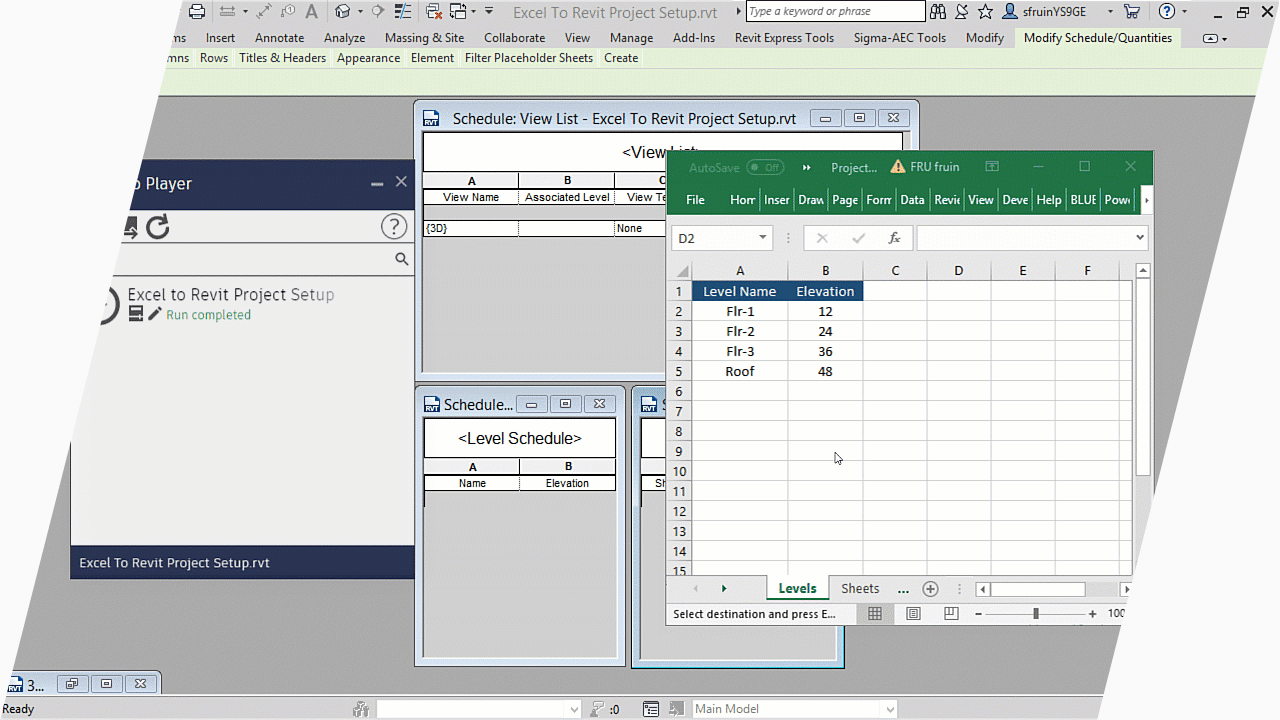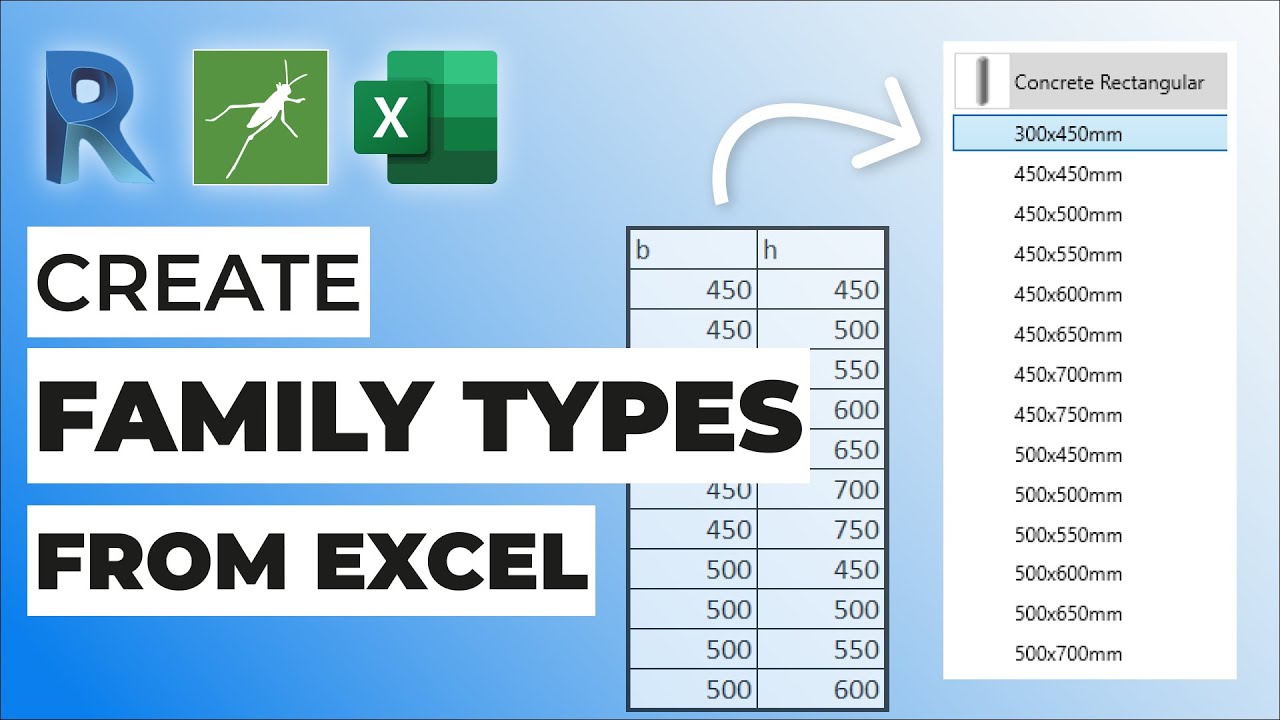Boost Your Layout Video Game with Necessary Revit Add Ins
Wiki Article
Damaging Obstacles: Excel Importation Techniques for Advanced Revit Users
Check out numerous data importation approaches and master Excel combination to enhance your Revit modeling abilities. With our tips and methods, you can conquer importation obstacles and end up being a real expert in making use of Excel for your Revit projects.Advanced Revit Users: Leveraging Excel for Importation
You can quickly utilize Excel for importation as an innovative Revit individual. Excel is an effective tool that can greatly improve your operations and effectiveness in Revit. With its capacity to handle large quantities of information and carry out complicated estimations, Excel can be an important property in handling and organizing your job details.One method to utilize Excel for importation is by utilizing the "Link Excel" function in Revit. This attribute permits you to link an Excel spreadsheet straight right into your Revit project, enabling you to update and integrate information in between both programs. This can be especially beneficial when dealing with routines or tracking adjustments in your task.
An additional means to make use of Excel is by utilizing the "Import/Export" feature in Revit. This function enables you to import and export data between Revit and Excel, providing you the versatility to collaborate with information in both programs. You can import information from Excel into Revit to produce aspects such as doors, rooms, or walls, and you can also export data from Revit to Excel for more evaluation or coverage.

Exploring Data Importation Techniques in Revit Utilizing Excel
Checking out exactly how to import data from Excel into Revit supplies efficient methods for integrating information. When you import data from Excel, you can seamlessly move information such as area timetables, product listings, and tools information into your Revit project. This process allows you to conserve time and initiative by staying clear of hands-on data entrance.To import data from Excel into Revit, you can make use of the "Import/Export" feature. This attribute allows you to map the Excel information fields to the corresponding Revit parameters, ensuring that the info is appropriately designated within the model. By picking the suitable import options, you can manage exactly how the data is imported and how it connects with your task.
An additional method for importing information from Excel into Revit is by making use of Dynamo. With Eager beaver, you can create personalized scripts that import data from Excel and adjust it within your Revit project.
Understanding Excel Integration for Advanced Revit Modeling
Understanding Excel integration for sophisticated Revit modeling involves using reliable techniques to seamlessly transfer information and automate jobs within your job. By utilizing the power of Excel, you can boost your Revit modeling process and conserve valuable time. One essential strategy is importing data from Excel spread sheets straight into your Revit design. This permits you to populate specifications, such as area names or material amounts, easily. With a few basic actions, you can revit tools map the Excel columns to the corresponding Revit specifications and import the information accurately.An additional useful method is exporting data from Revit to Excel. This allows you to remove details from your model, such as schedules or material quantities, and evaluate it in Excel using formulas, charts, or other powerful tools. By leveraging the abilities of Excel, you can do intricate estimations, develop custom reports, and gain important insights into your project.
In addition to data transfer, Excel integration can automate recurring tasks in Revit. By creating macros or scripts in Excel, you can automate processes like creating sights, creating sheets, or using typical family members - revit tool. This not only saves time yet also guarantees consistency across your task
To understand Excel assimilation in Revit, it is vital to comprehend the information framework and exactly how Revit connects with Excel. By acquainting yourself with the available devices and methods, you can unlock the complete capacity of Excel combination and take your Revit modeling to the next level.
Conquering Importation Difficulties: Excel Techniques for Revit Experts
When getting over importation difficulties, it's vital to be familiar with reliable Excel techniques that can benefit specialists in Revit. As a sophisticated Revit user, you comprehend the importance of effortlessly importing data from Excel into your tasks.
One more beneficial technique is using the "Transpose" feature in Excel. This permits you to convert data from rows to columns or the other way around. When importing information into Revit, this can be especially handy when you have data in a vertical style in Excel, but you need it to be in a straight layout in Revit.
Additionally, using Excel solutions such as VLOOKUP and INDEX-MATCH can greatly assist in mapping data from Excel to Revit. These solutions permit you to look for particular worths in Excel and fetch equivalent data from another column. This can save you time and initiative when importing huge datasets right into Revit.
Excel Data Importation Idea for Advanced Revit Users
By acquainting on your own with reliable Excel ideas and techniques, you can improve your data importation process as an advanced customer of Revit. Furthermore, using Excel's "Paste Unique" attribute enables you to paste data from Excel right into Revit while preserving formatting, such as cell shade or font design. One more helpful method is to utilize Excel's "Replace and find" feature to rapidly make changes to your data prior to importing it right into Revit.
Final Thought
You have currently found out important strategies for importing data from Excel into Revit as an innovative user. Go ahead, damage those obstacles and excel in your Revit jobs!
When importing information right into Revit, this can be particularly valuable when you have information in a vertical format in Excel, however you require it to be in a horizontal format in Revit.
Moreover, utilizing Excel formulas such as VLOOKUP and INDEX-MATCH can considerably aid in mapping data from Excel to Revit. Additionally, utilizing Excel's "Paste Unique" attribute permits you to paste data from Excel into Revit while maintaining formatting, such as cell shade or font design.
Report this wiki page